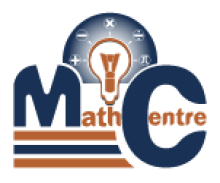Published - Fri, 17 May 2024

DISCUSSION ON CREATION OF DIGITAL RESOURCES FOR TEACHING
The most important aspect is to design a resource that effectively helps your students learn and understand mathematical concepts. By utilizing existing tools, focusing on clarity and engagement, you can create valuable digital resources even without extensive coding knowledge. Use your experience as teacher educator discuss how you can design a digital resources that for use in teaching challenging topics in mathematics. Provide your opinions in the comment area how can you design mathematics teaching digital content.
Created by
Comments (1)

Adam Kilamlya
Identifying Learning Objectives: Start by clearly defining the learning objectives for the challenging topics. Understand the specific concepts and skills that students need to grasp, as well as common misconceptions they may have.
Choosing Appropriate Tools: Select digital tools and resources that align with the learning objectives and cater to diverse learning styles. This could include interactive simulations, instructional videos, virtual manipulatives, or online practice exercises.
Creating Engaging Content: Develop content that is visually appealing, interactive, and engaging for students. Incorporate multimedia elements such as animations, graphics, and real-world examples to enhance understanding and maintain student interest.
Providing Scaffolded Support: Design resources that offer scaffolded support to help students navigate through the challenging topics. Start with simpler concepts and gradually increase the complexity, providing explanations, examples, and guided practice along the way.
Encouraging Active Learning: Promote active learning by incorporating opportunities for students to interact with the content, make connections, and apply their knowledge in meaningful ways. This could include interactive activities, problem-solving tasks, and collaborative projects.
Offering Formative Assessment: Integrate formative assessment strategies into the digital resources to gauge student understanding and provide timely feedback. Include quizzes, polls, and self-assessment tools to monitor progress and identify areas for improvement.
Facilitating Reflection and Review: Encourage students to reflect on their learning and review challenging topics through digital resources such as concept maps, summaries, and revision quizzes. Provide opportunities for students to consolidate their understanding and make connections across different concepts.
In the comments section, educators can share their insights and suggestions for designing mathematics teaching digital content. They can discuss specific tools, techniques, and best practices that have been effective in their own teaching contexts, fostering a collaborative exchange of ideas and resources among fellow educators.
Search
Popular categories
INTERACTIVE TEACHING METHODS
17COLLEGE BASED PD MODELS
3MORO MATH CENTRES
3ZANA ZA KUFUNDISHIA HESABU
1Latest blogs

MAJADALA WA MADA YA KUANDAA SHUGHULI ZA UFUNDISHAJI
Tue, 21 May 2024

MAJADILIANO KUHUSU MAADA YA MIFANO YA MBINU SHIRIKISHI
Sat, 18 May 2024

MAJADILIANO KUHUSU MAADA YA MIFANO YA MBINU SHIRIKISHI
Sat, 18 May 2024

Write a public review